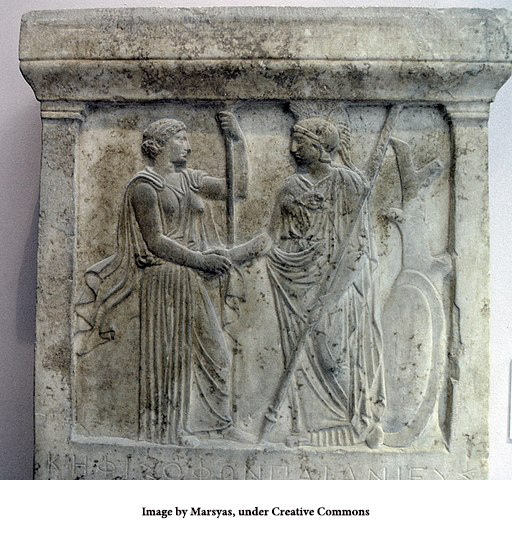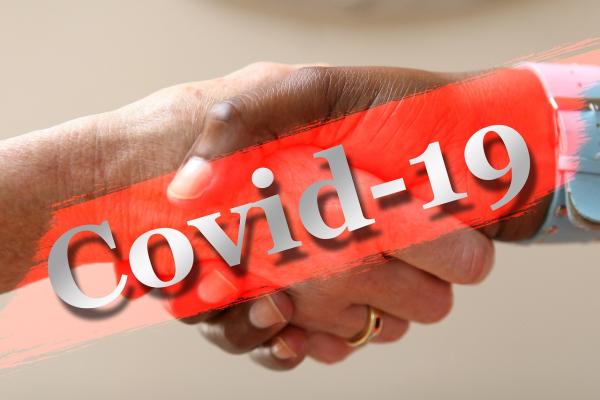“I don’t think we should ever shake hands again, to be honest with you. Not only would it be good to prevent coronavirus disease, but it probably would also decrease instances of influenza dramatically in this country.” – Dr. Anthony Fauci, April 2020
“It’s [hand shaking] an outdated custom. Many cultures have learned that you can greet one another without touching each other. … when you shake another person’s hand, you have “no idea” where that hand has been and you are exposing yourself to “elements of danger” like viruses and different kinds of bacteria.”
– Dr. Gregory Poland, spokesperson for Infectious Diseases Society of America
Do we need to do away with handshaking and replace it with another greeting?
The CDC’s current guidance on COVID-19 prevention addresses wearing masks and increasing space and distance but does not say whether handshaking should be avoided. In June of 2021, the Cleveland Clinic, a well-recognized health system, declared it safe to shake hands, but only if you’ve been vaccinated for COVID-19 and are comfortable with it.
There have long been germaphobes who have decried handshaking as an unnecessary germ-spreading tradition. But even though past disease outbreaks, such as yellow fever and cholera in the 19th century and the flu pandemic in 1918, caused a temporary cessation of the greeting, handshaking bounced back as the primary greeting in the U.S. Many believe this will happen with the COVID-19 pandemic as well.
Handshakes
 The handshake has a long and impressive history. As The Atlantic reported, handshaking was used by the ancient Greeks to ensure that their acquaintances were not carrying concealed weapons. Handshaking continued through the 17th century when some marriage portraits showed husband and wife shaking hands as a symbol of their legally binding commitment. Thomas Jefferson persuaded his contemporaries to adopt handshaking, which he felt was more democratic and egalitarian than the bows and curtsies of the British court.
The handshake has a long and impressive history. As The Atlantic reported, handshaking was used by the ancient Greeks to ensure that their acquaintances were not carrying concealed weapons. Handshaking continued through the 17th century when some marriage portraits showed husband and wife shaking hands as a symbol of their legally binding commitment. Thomas Jefferson persuaded his contemporaries to adopt handshaking, which he felt was more democratic and egalitarian than the bows and curtsies of the British court.
Fist bumps
The fist bump is a more recent greeting with a less clear background. Some believe they began with the low- and high-fives used among some athletes starting in the 1950s. Others believe that fist bumps began in the 1970s with NBA players, such as Baltimore Bullets guard Fred Carter, or during the Vietnam War as a modified form of the Black Power salute. Fist bumps moved into the mainstream in 2006 when former President Barack Obama and former First Lady Michelle Obama bumped fists before the victory speech on election night.
 Since fist bumping results in less skin contact than handshaking, some have suggested that it be used as an alternative greeting to prevent the spread of viruses. While there are no studies that directly examine the spread of COVID-19 through handshaking or fist bumping, there was a small study of the two alternative greetings involving a bacteria, specifically methicillin-resistant Staphylococcus aureus (MRSA)
Since fist bumping results in less skin contact than handshaking, some have suggested that it be used as an alternative greeting to prevent the spread of viruses. While there are no studies that directly examine the spread of COVID-19 through handshaking or fist bumping, there was a small study of the two alternative greetings involving a bacteria, specifically methicillin-resistant Staphylococcus aureus (MRSA)
Fifty patients chronically “colonized” with MRSA greeted a staff member wearing sterile gloves with a:
- Cruise tap (greeting consists of touching a single knuckle)
- A fist bump (all knuckles touch)
- Handshake
- Handshake following the use of alcohol-based hand sanitizing gel.
After each greeting, MRSA levels on the glove were counted. Although the traditional fist bump did show lower transfer levels than the handshake (16% vs. 22%), the difference was insignificant. For the safety-minded, the transfer levels for the cruise tap was 8%, but hand sanitizer before a handshake only transferred 6%. The same researchers also considered virus transmission using a harmless virus-contaminated computer keyboard and mouse followed by the cruise tap, fist bump, and handshake. While again, the handshake transferred the highest levels (91%), fist bumps were no slackers in the transfer department, with 59% of the virus being transmitted.
Surface Transmission
The primary source of transmission of COVID-19, a respiratory virus, is from breathing air that contains the virus. The virus enters the air in wet droplets, primarily from coughing and sneezing, where it can subsequently be inhaled by people nearby. This is also the primary source of transmission for the airborne viruses that cause the common cold, chickenpox, measles, and mumps, and the bacteria that cause tuberculosis, whooping cough, and diphtheria.
Transmission from surfaces adds complexity. Viruses must be able to land and survive on surfaces. Studies have shown that COVID-19 loses approximately 70-90% of its viability on surfaces almost immediately, with further decay more slowly over time. And the type of surface matters. Remember the early injunctions during the pandemic to leave boxes outside for 24 hours and then wipe them down before bringing them into your home? The porosity of the surface seems to make a difference. While a virus can survive on cardboard for 24 hours, it is extremely unlikely to be a source of infection; less porous surfaces like plastic, ceramics, and metal harbor a host of germs for far longer.
After the surface is touched, bacteria or viruses must be able to find their way, in sufficient numbers, to the organ system where they can thrive and then survive the attack by your immune system. Specific pathogens, particularly those that cause gastrointestinal illnesses, are easily transmitted on surfaces. The norovirus, famous for causing outbreaks on cruise ships, and Tinea pedis, a fungus that causes athlete’s foot, transmitted on contaminated floors and towels are two examples. Although not impossible, it is more difficult for many viruses, including COVID-19, to spread in this manner.
COVID-19 is now endemic and will be with us for a long time, just like the flu and common cold. We need to get back to engaging with our neighbors and friends. Here are my common-sense conclusions:
- Since COVID-19 is primarily spread through the air and your body has significant immune defenses, a brief greeting such as a handshake is unlikely to transmit the disease.
- Fist bumps transfer slightly fewer germs than handshakes, but the difference is marginal.
- Mom was right – wash your hands often with soap and water (or use hand sanitizer)!




